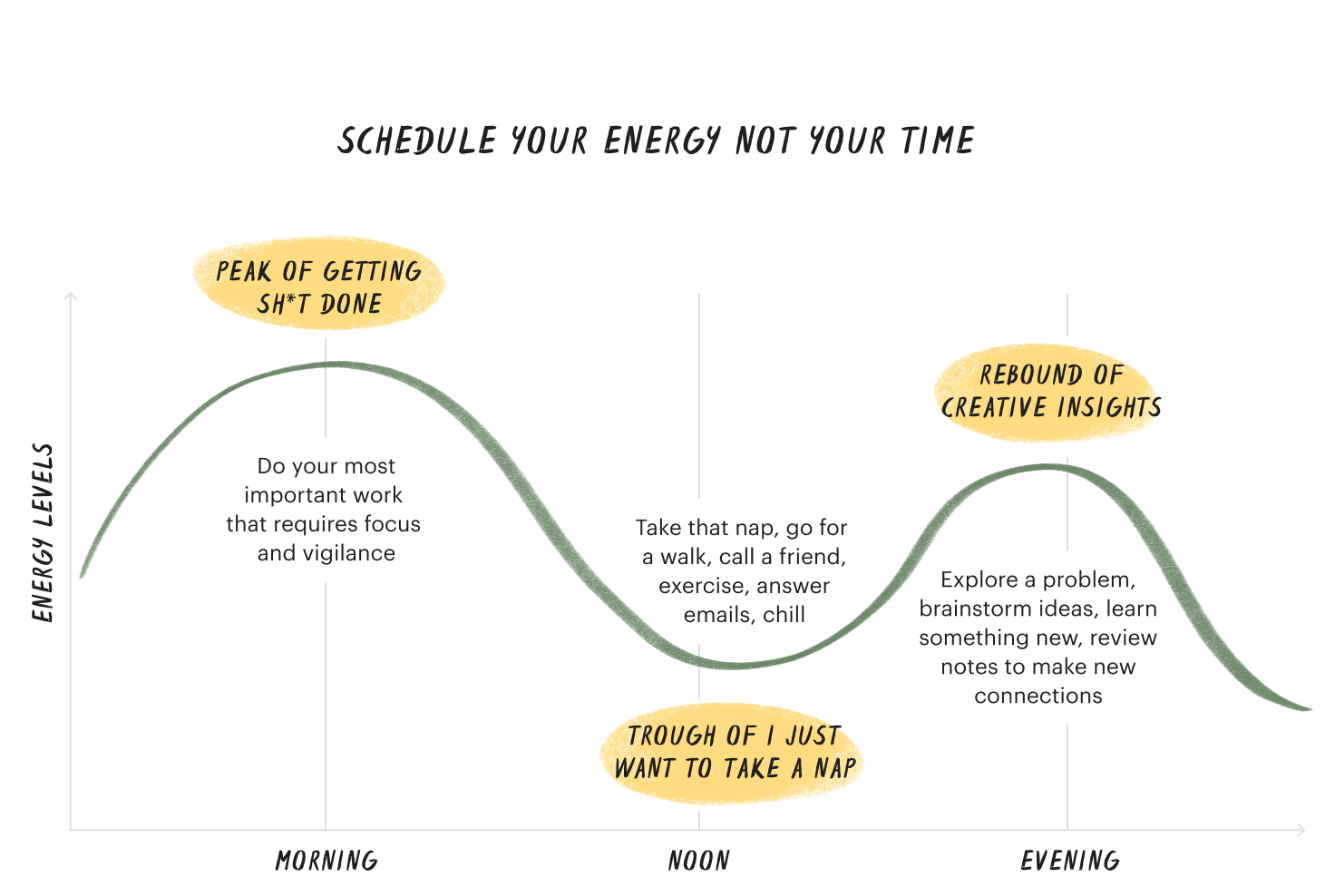Schedule your energy not your time
There are only so many hours in the day. It's an undeniable truth. But not every hour is equal. What if you could maximise your golden hours and put your sluggish 60 minutes to better use?

Scheduling your energy, not your time could be the key to productivity.
It’s something Daniel H Pink discusses in ‘When: the scientific secrets of perfect timing‘. Often we refer to timing as an art, but Pink thinks there’s much more science to it.
He draws on psychology, biology, and economics, to show how we can use the hidden patterns of the day to build our own ideal schedule.
According to Pink:
“There’s substantial evidence that our emotional levels tend to follow a daily pattern – but that doesn’t mean every pattern is the same. Although everyone shares the afternoon energy trough there’s a good chance you have friends of family whose schedule is otherwise different.”
In fact studies show that on average one in every four people has an internal clock that differs from the usual ‘morning peak, afternoon trough, and evening rebound’. You might have heard about night owls and larks? If you’re an owl you’ll peak at around 9pm whereas larks experience the peak, trough, and rebound a few hours earlier than normal.

Understanding your rhythms
Before we can start scheduling our energy not our time, we need to take some time to understand our internal clock. Owls tend to people who go to bed late and want to wake up late, larks are the opposite and the ambivalent (the majority of people) can adapt to different sleep schedules.
If you wake up bright and early at 6am, fall asleep easily at 9pm and staying up till midnight is a chore, you’re a lark. Do you crave a lie in till 11am and struggle to sleep before midnight? It’s likely you’re an owl.
Obviously, the schedules and responsibilities of life can skew our daily patterns. So try to keep a journal over a couple of weeks to note how you’re feeling at different times of the day to try and establish if your current patterns are actually going against your natural preferences.
Using your power hours
So once we know when our peaks and troughs are, how can we use them to our benefit?
As Pink says:
“if you’re among the 60 to 80 percent of people who are neither larks nor owls, then the morning peak is the best time to handle analytical tasks that require a logical, focused and disciplined mind. As for tasks that require more abstract or ‘outside the box’ thinking, this is best handled during the rebound of the late afternoon and early evening.”
If you’re a lark you should shift this schedule forward a few hours and if you’re an owl, you should reverse it and use your night time peak to think analytically and use the morning for more creative tasks.
You might want to consider:
- Having important meetings in the morning when clear decisions are needed
- Accepting the afternoon lull and using those hours for mindless or repetitive tasks
- Scheduling an early afternoon walk, catch-up chat, exercise, or a time to chill
- Setting brainstorming sessions for the late afternoon
- Learning new tasks later in the day – in your creative rebound time
This illustration is a great way to get a grasp of when to ‘Get sh*t done’ and when to ease off:

Whether 10-11am or 8-9pm is where our magic happens. By getting attuned to and making the most of our energy levels puts us in command of our productivity. The next time you’re battling with an afternoon brain fail, give yourself permission to switch off and take a walk. When you’re scheduling your next week think don’t accept meeting times when you know you won’t be at your best. Take control of your energy levels and the productivity will flow.